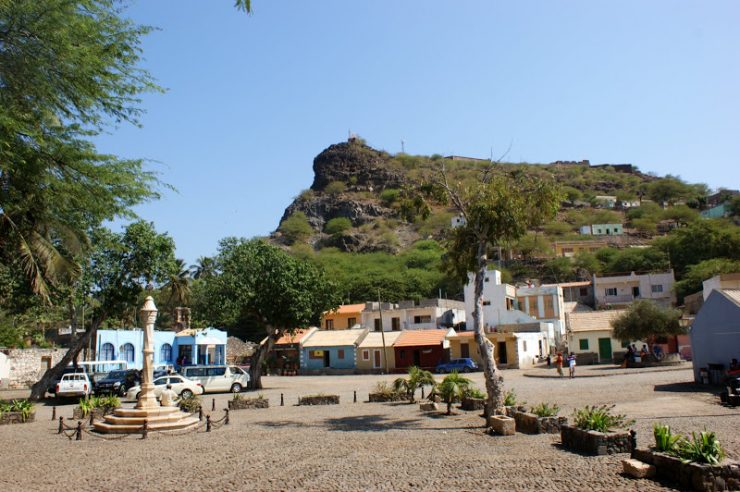Cidade Velha
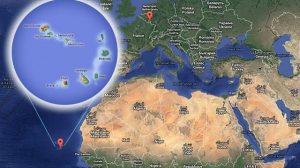
Cidade Velha is a town located in the municipality of Ribeira Grande de Santiago, a dozen kilometers from Praia, the capital city of Cabo Verde, and about 570 kilometers from the West African coast.
It was the first city that the Portuguese settled in Africa, during the course of their journeys of discoveries. Hence, it is an obligatory reference in the historical context of the islands of Cabo Verde.
It is the cradle of Cabo-Verdianoity. It is also the toponymy of what was once the ancient city of Ribeira Grande, which was the capital of the archipelago of Cabo Verde for some centuries.
It was declared a World Heritage Site by UNESCO on June 26, 2009.
Its classification by UNESCO as a World Heritage Site has increased its visibility at international level, resulting in a significant increase in the number of visitors.
This city is today, in the context of the island of Santiago, the most visited site, being the third in the national context.
From the crossing of these two distinct races originated a mestizo population. A miscegenation that translates not only in the physical aspect, but also in the cultural aspect.
The city was erected in the 10th century.
It was around 1460, when sailors serving the Portuguese Crown, Antonio da Noli and Diogo Gomes, discovered the first islands of the Cabo Verde archipelago, and the first humans settled in the Cabo Verde archipelago.
It is in the Cidade Velha of Santiago that the Crioulo man was born.
It was the meeting place of the first Europeans and blacks of the coast of Africa brought to settle these islands.
And to serve as a sourcing point for the slave trade between Africa, Europe, and America.
Soon after its foundation, the ancient city of Ribeira Grande became one of the main ports of mandatory scale on the Atlantic routes and allowed colonial expansion towards Africa, America and the Indies.
Through its ports passed Vasco da Gama, on the voyage and return of the Indies, Christopher Columbus, on the occasion of his voyages to the West Indies, and Ferdinand Magellan, during the first, and definitive, voyage of navigation around the world.
Ribeira Grande contributed to the transformation of the Atlantic into a network of distribution of goods, plants, animals and men.
May 4, 1712 marked the irreversible sinking of the Cidade Velha of Santiago. It was on this day that Ribeira Grande was attacked and plundered by French pirates, commanded by Jacques Cassard. After this attack everything began to fall into decay.
Gradually Cidade Velha was losing its influence and later abandoned.
It was here that, five centuries ago, the history of Cabo-Verdianoity began.
The birthplace of Cabo-Verdianoity is now a tourist spot par excellence. Its historical monuments make it a pleasant place, especially for those who are interested in the history of a people arising from the crossing of various races.
The «birthplace of the Cabo-Verdiano nation,» born there in the 15th century, has become the destination of those looking for something other than «sun and beach».
It is nowadays benefited by good hotels and the attraction of a typical artisan manifested in the small bars existing in the historical Rua Banana and the Largo do Pelourinho, and an important center of exhibition of artisans.
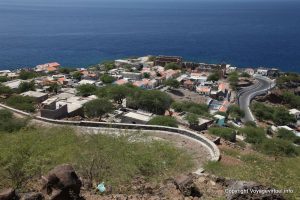

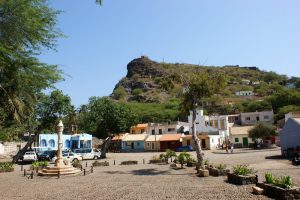
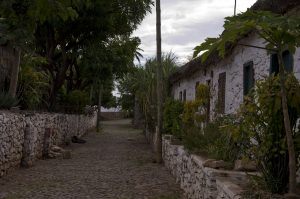
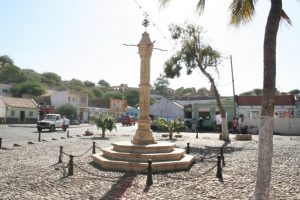
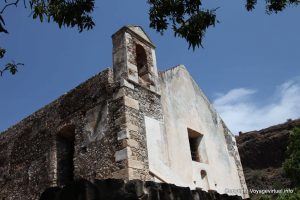
Cidade Velha localiza-se no concelho da Ribeira Grande de Santiago, a uma dúzia de quilómetros da cidade da Praia capital de Cabo Verde a cerca de 570 quilómetros da costa da África Ocidental.
Foi a primeira Cidade que os portugueses tiveram em África, na sua aventura dos descobrimentos. Daí ser uma referência obrigatória no contexto histórico das ilhas de Cabo Verde.
É o berço da cabo-verdianidade. É também a toponímia do que foi a antiga Cidade da Ribeira Grande, que foi capital do arquipélago de Cabo Verde durante alguns séculos.
Foi declarada Patrimônio Mundial da Humanidade numa decisão da UNESCO no dia 26 de junho de 2009.
A sua classificação pela UNESCO, como Património Mundial ampliou a sua visibilidade a nível internacional, traduzido num aumento significativo do número de visitantes.
Esta Cidade é hoje no contexto da ilha de Santiago o sítio mais visitado, sendo o terceiro no contexto nacional.
Corria por volta do ano 1460, quando marinheiros ao serviço da Coroa portuguesa, Antonio da Noli e Diogo Gomes descobriram as primeiras ilhas do arquipélago de Cabo Verde, é o primeiro estabelecimento humano no arquipélago de Cabo Verde.
É na Cidade Velha de Santiago que nasceu o Homem crioulo.
Foi o ponto de encontro dos primeiros europeus e negros da costa de África trazidos para o povoamento dessas ilhas.
Do cruzamento destas duas raças distintas originou uma população mestiça. À miscigenação que se traduz não só no aspecto físico, mas também no aspecto cultural.
A cidade foi erigida no século XV para servir de ponto de abastecimento para o comércio de escravos entre África Europa e América.
Logo após a sua fundação, a antiga cidade da Ribeira Grande tornou-se num dos principais portos de escala obrigatória nas rotas atlânticas e permitiu a expansão colonial em direcção à África, América e Índias.
Pelo seu porto passaram Vasco da Gama, na ida e no regresso das Índias, Cristóvão Colombo por ocasião das suas viagens às Índias Ocidentais e Fernão Magalhães, durante a primeira, e definitiva, viagem de navegação à volta do mundo.
A Ribeira Grande contribuiu para a transformação do Atlântico numa rede de distribuição de mercadorias, plantas, animais e homens.
Quatro de Maio de 1712 marcou o afundamento irreversível da Cidade Velha de Santiago. Foi nesse dia que Ribeira Grande é atacada e pilhada por piratas franceses, comandados por Jacques Cassard. Depois desse ataque tudo começou a entrar em decadência.
Paulatinamente Cidade Velha ia perdendo a sua influência e mais tarde abandonada.
Era aqui que há cinco séculos começava a história da cabo-verdianidade.
O berço da cabo-verdianidade é hoje um ponto turístico por excelência. Os seus monumentos históricos fazem dela um lugar aprazível principalmente para aqueles que se interessam pela história de um povo surgido de cruzamento de várias raças.
O “berço da nação cabo-verdiana” que ali nasceu no séc. XV tornou-se o destino de quem procura algo diferente do “sol e praia”.
É hoje em dia beneficiada por bons hotéis e pelo atractivo de um típico artesanato patente nos pequenos bares existentes na histórica Rua Banana e no Largo do Pelourinho, e um importante Centro de Exposição de Artesanato.



Victor Manuel Borges Lopes
I live in Cidade Velha, a small city considered world heritage of humanity,which is located in the south of the largest island of Cape Verde, Santiago.
I am a construction engineering student at Jean Piaget University in Cape Verde.
Due to the importance of my city, I participated in the young ambassador of the Patrimony of Humanity contest, with the aim of contributing to the preservation of the city together with competent organizations to maintain their importance

